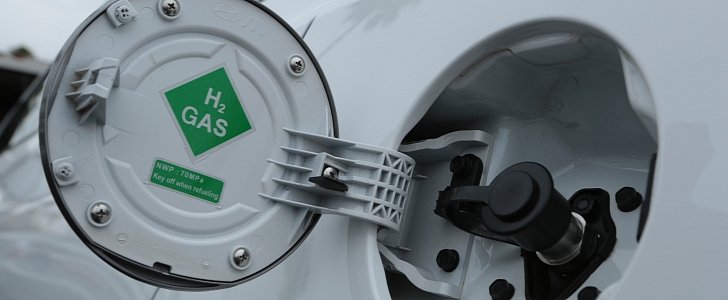Hydrogen fuel cars are expected to reach a production of 70,000 units a year by 2027, according to IHS Automotive. However, they might be more popular if the proper infrastructure for them were developed.
In a report from the famed research institute, it is said that Fuel Cell Vehicles are at a point where they could change mass-market mobility. Hydrogen cars could become more popular than electric vehicles and other alternative fuel solutions because of their fueling procedure.
However, this could only happen if the infrastructure required for these vehicles were developed in a way to ensure potential customers will have faith in the network to power their cars.
Most of you don't know this, but it takes just as much time to fill up a hydrogen car as it does with a conventional vehicle. From personal experience, I can tell you that the pump is cleaner, safer, and straightforward to use.
I know this because I've had the privilege of being invited to see BMW's hydrogen fuel cell vehicle project at their facility in Miramas, France.
Currently, only three automakers have production cars powered by hydrogen fuel cell solutions, but the number would rise to 17 over the next 11 years. At this point, we must note that 11 years is a long time for the automotive industry, and anything could happen in the meantime.
Unfortunately, current estimates place hydrogen fuel cell vehicles at less than 0.1 percent of all vehicles produced by 2027. Even with stricter emission targets coming into play in 2022, automakers might not make the switch to hydrogen cars and still focus only on electrics.
According to data provided to IHS Automotive, the world has approximately 100-plus public hydrogen refueling stations. On a global scale, this is a small number, especially when compared to EV charging plugs. There is an explanation for this, as the cost of one of these stations is estimated at $3 million. When you cannot achieve profit in a foreseeable future, it’s easy to understand why few people invest in these refueling stations.
There is also another “elephant in the room,” as IHS Automotive notes - the source of the hydrogen. Apparently, 96% of all hydrogen produced worldwide is “brown hydrogen.” This means that it is derived from fossil fuels. Making an eco-friendly alternative fuel from conventional sources sounds counterintuitive, but the market today does not justify making “green” hydrogen, that is fully sustainable.
The same argument, with the elephant in the room, appears with the batteries of all electrified cars, from hybrids and electrics to FCVs, which require expensive and rare metals. Furthermore, critics of these vehicles also mention charging with electricity from non-renewable sources as a stinging problem.
However, this could only happen if the infrastructure required for these vehicles were developed in a way to ensure potential customers will have faith in the network to power their cars.
Most of you don't know this, but it takes just as much time to fill up a hydrogen car as it does with a conventional vehicle. From personal experience, I can tell you that the pump is cleaner, safer, and straightforward to use.
I know this because I've had the privilege of being invited to see BMW's hydrogen fuel cell vehicle project at their facility in Miramas, France.
Currently, only three automakers have production cars powered by hydrogen fuel cell solutions, but the number would rise to 17 over the next 11 years. At this point, we must note that 11 years is a long time for the automotive industry, and anything could happen in the meantime.
Unfortunately, current estimates place hydrogen fuel cell vehicles at less than 0.1 percent of all vehicles produced by 2027. Even with stricter emission targets coming into play in 2022, automakers might not make the switch to hydrogen cars and still focus only on electrics.
According to data provided to IHS Automotive, the world has approximately 100-plus public hydrogen refueling stations. On a global scale, this is a small number, especially when compared to EV charging plugs. There is an explanation for this, as the cost of one of these stations is estimated at $3 million. When you cannot achieve profit in a foreseeable future, it’s easy to understand why few people invest in these refueling stations.
There is also another “elephant in the room,” as IHS Automotive notes - the source of the hydrogen. Apparently, 96% of all hydrogen produced worldwide is “brown hydrogen.” This means that it is derived from fossil fuels. Making an eco-friendly alternative fuel from conventional sources sounds counterintuitive, but the market today does not justify making “green” hydrogen, that is fully sustainable.
The same argument, with the elephant in the room, appears with the batteries of all electrified cars, from hybrids and electrics to FCVs, which require expensive and rare metals. Furthermore, critics of these vehicles also mention charging with electricity from non-renewable sources as a stinging problem.

